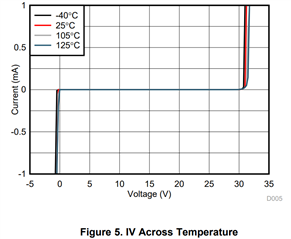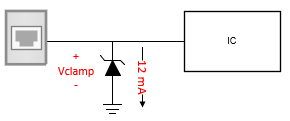Hi team,
I was having hard time understanding the definitions of DC current rating of TVS datasheet. Could you please help me understand the concept?
For the uni-directional TVS it is stated like below (TVS2700);

For bi-directional it is like below (TVS2701);

Q1: I believe IBR is the current @ VBR (break-down voltage) which would be flowing though the TVS. And the concept is the same for both uni/bi-directional. Is my understanding correct?
Q2: What is the DC forward current rating? Is it the max current that the TVS can handle continuously? Below figure is from TVS2700, showing there is ~0A of current when the voltage is 0V~30V. I thought that means, regardless of the current that tries to flow thought the TVS, TVS can block the current when the voltage is 0V~30V. And the DC forward current rating is for when the voltage is larger than 30V, which need to be less than 500mA. Is my understanding correct? For example, when expected max voltage is 22V and the max DC current is 2A, can TVS2700 be used?

Q3: I cannot find IV figure like above for bi-directional TVSs. Can I assume it would the same for positive-voltage region, and rotated 180 degree for negative-voltage region?
Best regards,
Kurumi



